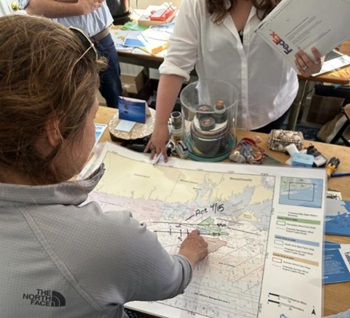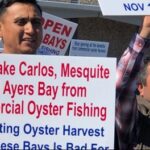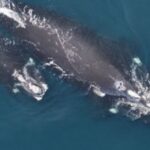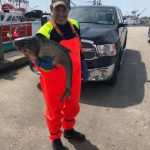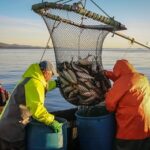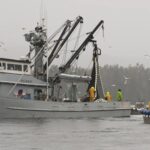Tag Archives: Long Island
Hampton Bays business owner worries closed Ponquogue Bridge will impact his livelihood
 A business owner in the Hampton Bays is worrying about economic impacts that the closure of the Ponquogue Bridge will have on his livelihood. The Ponquoge Bridge was suddenly closed to cars and pedestrians Friday after a Department of Transportation crew’s routine inspection found the concrete girders were deteriorating. “This is actually a lifeline for not only Hampton Bays — this is a lifeline for the Hamptons and Long Island as well,” said John Capuano, of Hampton Bays. Now that the Ponquogue Bridge is closed in Hampton Bays, Capuano wonders how it will affect the area if it stays closed in the warmer months. “Not only to the people trying to enjoy the area but the economics of all the businesses in town: The pizza parlors, the motels, they’re just not going to have the business,” he said. Capuano is the captain of the Shinnecock Star, a daily fishing boat in Hampton Bays. He says if the bridge doesn’t open by the spring, his business will be impacted. more, >>Click to read<< 13:29
A business owner in the Hampton Bays is worrying about economic impacts that the closure of the Ponquogue Bridge will have on his livelihood. The Ponquoge Bridge was suddenly closed to cars and pedestrians Friday after a Department of Transportation crew’s routine inspection found the concrete girders were deteriorating. “This is actually a lifeline for not only Hampton Bays — this is a lifeline for the Hamptons and Long Island as well,” said John Capuano, of Hampton Bays. Now that the Ponquogue Bridge is closed in Hampton Bays, Capuano wonders how it will affect the area if it stays closed in the warmer months. “Not only to the people trying to enjoy the area but the economics of all the businesses in town: The pizza parlors, the motels, they’re just not going to have the business,” he said. Capuano is the captain of the Shinnecock Star, a daily fishing boat in Hampton Bays. He says if the bridge doesn’t open by the spring, his business will be impacted. more, >>Click to read<< 13:29
Suffolk Bill Aims to Protect Commercial Fishing Industry
 The Suffolk County Legislature is considering a bill that, it says, will help commercial fishermen. The bill, now in committee, will allow property owners of commercial fishing businesses to apply for a conservation easement that would restrict future development. The bill was supposed to come to a vote late in 2024 but is now being studied to broaden its scope. The bill did receive positive support at a public hearing in November before the full legislature. Earlier in 2024, Suffolk County Executive Edward P. Romaine signed legislation increasing spending for farmland preservation to $15 million annually. He said the commercial fishing industry needed support as well. According to the legislation, any type of business that contributes to working waterfronts, such as gear storage, aquaculture, docks, boat repairs, could benefit from the pending legislation. more, >>CLICK TO READ<< 06:50
The Suffolk County Legislature is considering a bill that, it says, will help commercial fishermen. The bill, now in committee, will allow property owners of commercial fishing businesses to apply for a conservation easement that would restrict future development. The bill was supposed to come to a vote late in 2024 but is now being studied to broaden its scope. The bill did receive positive support at a public hearing in November before the full legislature. Earlier in 2024, Suffolk County Executive Edward P. Romaine signed legislation increasing spending for farmland preservation to $15 million annually. He said the commercial fishing industry needed support as well. According to the legislation, any type of business that contributes to working waterfronts, such as gear storage, aquaculture, docks, boat repairs, could benefit from the pending legislation. more, >>CLICK TO READ<< 06:50
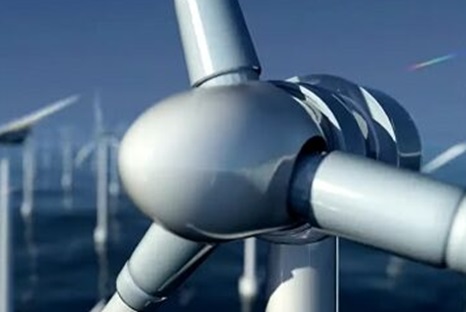
BOEM admits potentially irreversible harm to whales, fisheries, and seabirds
A government regulator recognizing offshore wind’s destructive environmental effects is as rare as a North Atlantic right whale. But a recent, 600-plus page report from the Bureau of Ocean Energy Management (BOEM) admits that the offshore wind development planned for the New York Bight, the triangular area bordered by the New Jersey and Long Island coastlines may irreversibly harm whales, commercial and recreational fisheries, and seabirds. The BOEM report is the agency’s first to evaluate the cumulative impacts of offshore wind development. Its authors cite a wide range of potential effects, from negligible (or even beneficial) to major. Acknowledging potentially “major” harms is a radical departure from the agency’s previously accepted Environmental Impact Statements for offshore wind projects, which have always focused on the impacts of individual projects, rather than the cumulative impacts of multiple projects. more, >>CLICK TO READ<< 07:28
Charter Capt. Found Guilty of Illegal Commercial Fishing On LI
 A Connecticut charter captain was found guilty of illegal commercial fishing off Long Island, Suffolk County District Attorney Ray Tierney said. Michael Tenedine, 58, of East Haven, was found guilty after a trial of operating a charter vessel without a permit; illegal possession of black sea bass for poaching; and possessing Black sea bass, a protected species due to overfishing, Tierney said. The trial conviction comes as Tierney ramps up his “Everblue Initiative,” a collaboration with state and local law enforcement to protect the more than 60 percent of Suffolk County square mileage comprised of water. Photos, more, >>CLICK TO READ<< 12:03
A Connecticut charter captain was found guilty of illegal commercial fishing off Long Island, Suffolk County District Attorney Ray Tierney said. Michael Tenedine, 58, of East Haven, was found guilty after a trial of operating a charter vessel without a permit; illegal possession of black sea bass for poaching; and possessing Black sea bass, a protected species due to overfishing, Tierney said. The trial conviction comes as Tierney ramps up his “Everblue Initiative,” a collaboration with state and local law enforcement to protect the more than 60 percent of Suffolk County square mileage comprised of water. Photos, more, >>CLICK TO READ<< 12:03

New Federal Report: Offshore Wind Farm Construction Can Harm Whales, Birds, Fisheries
The U.S. Bureau of Ocean Energy Management (BOEM) on Monday released a new report that said whales, dolphins, birds and more can indeed be harmed — and killed —by offshore wind farms. BOEM also warned commercial fishing could be disrupted by wind farms. The report is an environmental impact statement BOEM was required to conduct of these six existing wind farm sites that were previously approved off New Jersey/Long Island. Wind turbine construction actually does increase the risk of injury to whales, particularly the underwater noise from pile-driving during construction, the federal report found. Turbine construction can permanently damage whales’ hearing. Turbines can also lead to an “increased risk of individual injury and mortality due to vessel strikes” and entanglement in fishing gear. more, >>CLICK TO READ<< 07:36
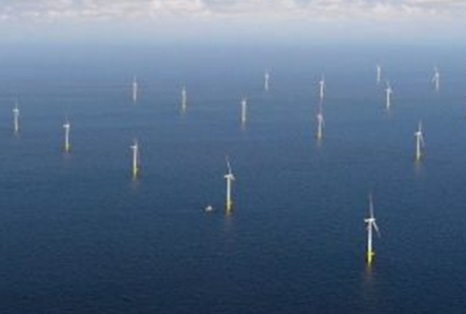
RWE and National Grid Propose New York’s Largest Offshore Wind Project
German utility RWE and New York power company National Grid have announced a proposal to build a 2.8 GW wind park off Long Island, the largest offshore wind power plan yet submitted to New York state energy regulator NYSERDA. It is the second time that it has submitted its Community Offshore Wind project for NYSERDA’s approval: the previous bid was awarded, then canceled when the economic viability of first-generation U.S. offshore wind projects soured. RWE and National Grid won a lease area in the New York Bight at auction in 2022, one of several awarded that year. The site has the potential for up to 3 GW of nameplate capacity, about a third of New York’s 2030 target of 9 GW. more, >>CLICK TO READ<< 08:56
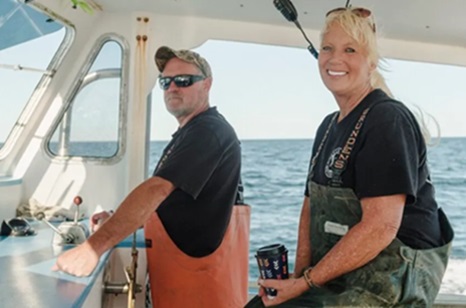
Spirit in the Sound: Fishing with Mattituck’s Sea Queen
Plenty of commercial fishermen are still plying the waters of the East End despite the occupation’s stressful nature: High operating costs, climate change, onerous regulations and physically exhausting work are all part of the job description. But one fisherman has made a practice of staying positive and recognizing the spiritual element of working on the water. Regina Migdalski works as a deckhand out of Mattituck Inlet. She and her husband, Rob (who she fondly calls “the Cranky Captain”), have a lobster boat named after her, the Regina Ann — outfitted for conch and fish pots (a die-off in the late 1990s resulted in too-few lobsters left in the Sound to fish for). They also work on a dragger, a type of fishing boat that tows a net, called the Stinky, owned by the pair and their partner Teddy Szczotka, a fellow fisherman. They work year-round catching fluke, scup, sea bass, blackfish, conchs and striped bass, depending on the season. Photos, more, >>CLICK TO READ<< 15:37
What Jersey Shore fishermen can learn from offshore wind farm spinning off Long Island
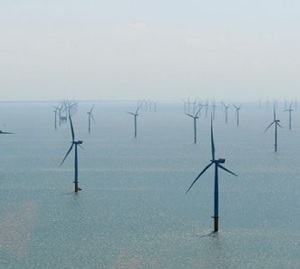 Only the silent hum of the ferry as it curved around the side of one of a dozen towering wind turbines could be heard Wednesday morning off Long Island. Nearby, fishing vessels were dwarfed by the 460-foot tall towers. A few boats flecked the horizon, traveling between the vast miles that stretched from Block Island to the South Fork wind farm. One of them was helmed by a local fisherman who’s been on these waters for over half a century. Nonetheless, Auteri and fishermen up and down the East Coast, including the Jersey Shore, have shared concerns over whether species they rely on will continue to frequent the areas where sweeping wind farms (taller than the Statue of Liberty) are sited or will be. And, they say, if it is proven wind farms drive fish away they should get money to make up for their economic loss. Video, more, >>CLICK TO READ<< 13:52
Only the silent hum of the ferry as it curved around the side of one of a dozen towering wind turbines could be heard Wednesday morning off Long Island. Nearby, fishing vessels were dwarfed by the 460-foot tall towers. A few boats flecked the horizon, traveling between the vast miles that stretched from Block Island to the South Fork wind farm. One of them was helmed by a local fisherman who’s been on these waters for over half a century. Nonetheless, Auteri and fishermen up and down the East Coast, including the Jersey Shore, have shared concerns over whether species they rely on will continue to frequent the areas where sweeping wind farms (taller than the Statue of Liberty) are sited or will be. And, they say, if it is proven wind farms drive fish away they should get money to make up for their economic loss. Video, more, >>CLICK TO READ<< 13:52
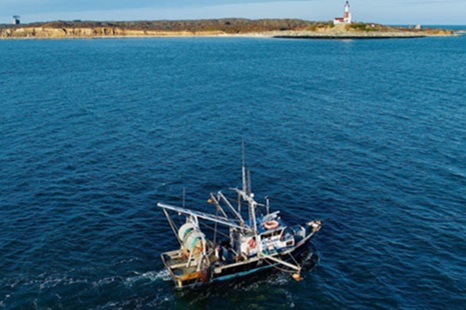
Once Sourced Out-of-State, Shrimp From New York Is Becoming a Status Ingredient
When wild shrimp is US-harvested, it’s pulled in-season from the waters off Louisiana, Texas, Florida, and the Carolinas. Increasingly, though, a select number of New York restaurants are embracing local shrimp, highlighting fisheries in and around Montauk. Long Island’s royal red shrimp is caught off Montauk at nearly 3,000 feet. “Their color is a gorgeous, gorgeous dark red; a color I’ve never seen in my life,” says lifelong fisherman, K.C. Boyle. Photos, more, >>CLICK TO READ<< 06:42
East End fishermen uneasy over wind farm South Fork Wind
 Late last year, Gov. Kathy Hochul called South Fork Wind, which is projected to eliminate hundreds of millions of tons of carbon emissions annually, a “major milestone” in the state’s “nation-leading effort to generate reliable, renewable clean energy. “But at least one East End community remains staunchly opposed to wind farms: commercial fishermen — who say that the massive, 50-story turbines could irreparably damage the local marine ecosystem and displace them from areas they’ve fished for decades or even generations. more, >>click to read<< 08:12
Late last year, Gov. Kathy Hochul called South Fork Wind, which is projected to eliminate hundreds of millions of tons of carbon emissions annually, a “major milestone” in the state’s “nation-leading effort to generate reliable, renewable clean energy. “But at least one East End community remains staunchly opposed to wind farms: commercial fishermen — who say that the massive, 50-story turbines could irreparably damage the local marine ecosystem and displace them from areas they’ve fished for decades or even generations. more, >>click to read<< 08:12
Fishing for Scallops When the Scallops Are Nearly All Dead
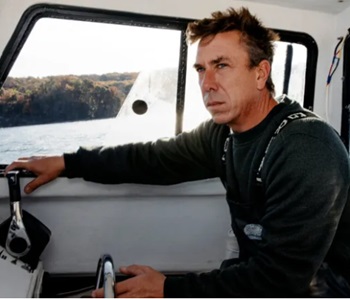 Mike Tehan pilots a fishing boat called Nibbles out of Shelter Island. An hour before sunrise on the first day of scallop season in November, as he unwound the ropes, started the outboard motor and piloted the 25-foot fiberglass boat from an island cove into the open waters of Peconic Bay, Mr. Tehan knew just what he’d find. “I didn’t come out here with big plans to get rich today,” he said. “You can’t say it’s depressing, because you already know. But you hope. “He bashed north against the waves, toward the protected bay off Orient, at the far northeast corner of Long Island. He dropped four rusty dredges into the water, just as the bay turned pink with sunrise. He let the outboard rumble the boat around for five minutes. Then he pulled the dredges back up and dumped the contents into a sorting tray. “Let’s see, we got seaweed, rocks, conch shells, lots of dead scallops and one good scallop,” he said, picking through the dreck with bright orange gloves. more, >>click to read<< 14:36
Mike Tehan pilots a fishing boat called Nibbles out of Shelter Island. An hour before sunrise on the first day of scallop season in November, as he unwound the ropes, started the outboard motor and piloted the 25-foot fiberglass boat from an island cove into the open waters of Peconic Bay, Mr. Tehan knew just what he’d find. “I didn’t come out here with big plans to get rich today,” he said. “You can’t say it’s depressing, because you already know. But you hope. “He bashed north against the waves, toward the protected bay off Orient, at the far northeast corner of Long Island. He dropped four rusty dredges into the water, just as the bay turned pink with sunrise. He let the outboard rumble the boat around for five minutes. Then he pulled the dredges back up and dumped the contents into a sorting tray. “Let’s see, we got seaweed, rocks, conch shells, lots of dead scallops and one good scallop,” he said, picking through the dreck with bright orange gloves. more, >>click to read<< 14:36
30-foot humpback whale found dead on Fire Island
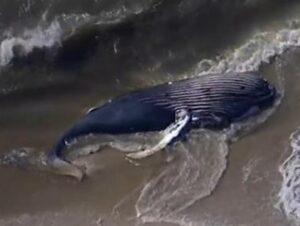 A 30-foot humpback whale was found dead on the shores of Fire Island on Friday morning — at least the 18th doomed humpback discovered on the East Coast so far this year. The tragic majestic mammal was found belly-up on the eastern side of Smith Point County Park in Shirley, Long Island, the National Oceanic and Atmospheric Administration said. The animal’s body has been collected for a necropsy, NOAA told Patch in a statement. The cause of death is unknown. NOAA has deemed the occurrences an “unusual mortality event.” Photos, short vid, >click to read< 18:24
A 30-foot humpback whale was found dead on the shores of Fire Island on Friday morning — at least the 18th doomed humpback discovered on the East Coast so far this year. The tragic majestic mammal was found belly-up on the eastern side of Smith Point County Park in Shirley, Long Island, the National Oceanic and Atmospheric Administration said. The animal’s body has been collected for a necropsy, NOAA told Patch in a statement. The cause of death is unknown. NOAA has deemed the occurrences an “unusual mortality event.” Photos, short vid, >click to read< 18:24
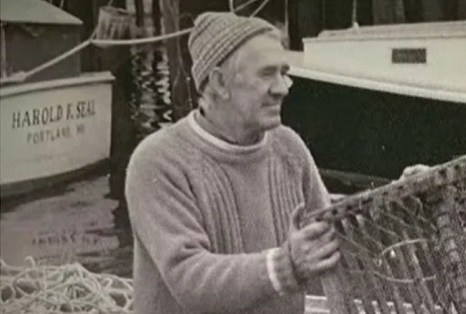
95-Yr-Old Pours Decades Of Wisdom About Maine Island’s “Good Old Days” Into Memoir.
Donnie MacVane has lived in the same house off the coast of Long Island for his entire life. At 95, you can bet that he’s gathered a story or two about the place! Now, he’s ready to share those stories with the world. Donnie recently published his first book, and it’s a memoir. It’s called “Memories That Linger: An Anecdotal History of Long Island, Maine.” Some of Donnie’s stories offer a unique look at historic events from his personal experience; for example, what it was like to be a child during World War II. Other reminiscences deal with significant moments in his own life, such as the unusual way that he met his wife, Carol. Video, >click to read< 09:11
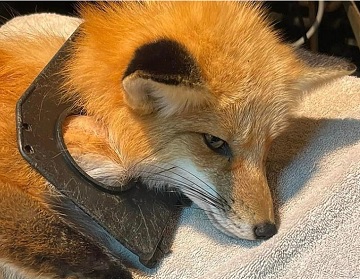
Nice People. Mainers Come Together to Save Fox’s Life After Months with Crab Vent Around Its Neck
It took 8 months and a lot of dedicated pros, to finally rescue a red fox on Long Island, Maine that had its head stuck in a crab vent. Maine Wildlife Transport, Wilderness Miracles, Saco River Wildlife Center and the Long Island Community banded together to try to rescue the female red fox that was spotted with the crab vent tightly around its neck back in the spring. They made multiple trips to the island trying to find the fox which is not an easy task when they need to cover an island that is 33.5 square miles in size.In case you’re wondering, a crab vent is a small hole in a trap that let’s lobster and crabs that are too small to be harvested, escape. This fox likely was curious and snooping around a trap somewhere on the island and got stuck, pulling the entire escape off of the trap and had been living with it for 8 months. Lots of fox photos, >click to read< 10:22
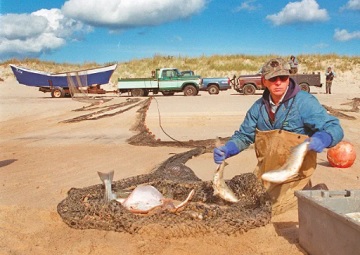
In a bayman’s death is a lesson
On a summer day in August, a memorial was held at Green River Cemetery in Springs for a man named Dan King, who had died in North Carolina in April 2020. Dan grew up in the Springs section of East Hampton, where his family had roots going back three centuries to the first European settlers. Dan was a fisherman, specifically a member of the haul-seining community. That’s a method of fishing in which dories are launched from the beach into the surf and nets are spread out to encircle schools of striped bass that are then winched onto the shore. The Kings had done it for generations, as had members of the Lester family. >click to read< 13:09

Amid Hamptons Mansions, East End Fishermen Beat On Against The Tide
On Gosman’s dock in Montauk, seagulls hovering above, I was greeted by the smells of gasoline and fish as I walked on the worn, white-speckled planks. The water looked invitingly blue, and a group of fishermen were readying their vessel for a day’s work. One of the fishermen and I exchanged nods. A cigarette hung from his lips and he wore heavy work gloves, thick orange waders with suspenders and a greasy baseball cap. The romanticized life of Montauk fisherman seeped into my head,,, >click to read< 10:48
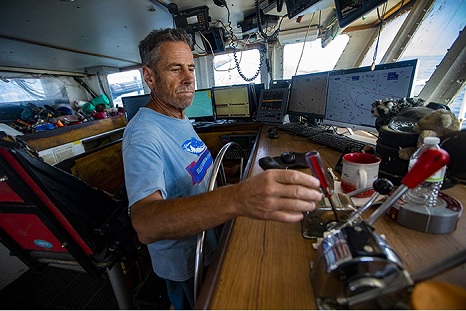
Offshore Wind Farms: As turbines rise, small-scale fishermen have the most to lose
David Aripotch is 65, a weathered man with gray hair, just tall enough to see over the helm. He has been fishing for almost a half-century, but he still gets excited every time the net is lifted from the ocean. It’s all the other things that eat at him. The federal fishing quotas that sometimes make him steam as far south as North Carolina to catch fish he can find off Long Island. The mind-boggling expenses of running a fishing boat: $5,000 a month for insurance, $30,000 for a new net, $60,000 for a paint job. Worst of all are the wind farms. “There’s so many things going against you as a commercial fisherman in the United States,” he said. “And now these wind farms, it’s almost like that’s the final nail in the coffin.” >click to read< (2nd article of 2 parts, >part 1<) 09:20
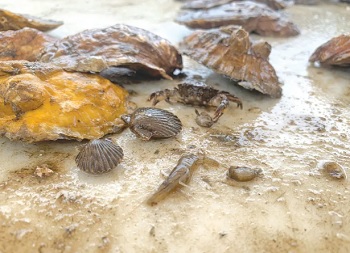
Peconic Bay Scallop: After disappointing seasons in 2019, ’20, the outlook remains bleak
Last week, Steve Tettelbach, head of Cornell Cooperative Extension’s Peconic Bay Scallop Restoration Program, finished up a series of dives at the seven sites from Flanders to Montauk,,, “At six of our seven sites, the average density declined by 64% to 99% between May and late August, and the highest die-off occurred at the three sites with the highest initial densities in spring 2021,” Mr. Tettelbach said. Only the site in Napeague Harbor saw an increase in bay scallop numbers over the course of the summer. Bay scallops in New York waters are supposed to live about 18 months. Why have bay scallops in the Peconic Bay system died months prematurely en masse for three years in a row? >click to read< 16:04
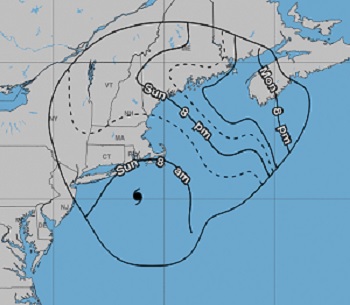
Tropical Storm Henri Public Advisory
At 800 AM EDT, the center of Tropical Storm Henri was located by reconnaissance aircraft and NOAA Doppler weather radars near latitude 40.7 North, longitude 71.3 West. Henri is moving toward the north-northwest near 16 mph. A north-northwestward motion with a decrease in forward speed is expected this morning. On the forecast track, Henri is expected to make landfall in southern New England or on Long Island later this morning or early this afternoon. After landfall, a turn back toward the north and an even slower forward speed are expected as Henri moves over southern New England.>click to read< 08:30
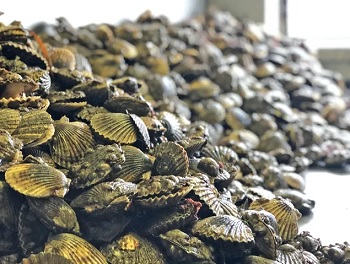
Long Island: When will bay scallops once again be plentiful?
After years of up and down harvests, 2021 is shaping up as another potentially poor year for bay scallops. Bay scallops have been a multi-million-dollar crop for the fishing industry, from the baymen or women who work hard to harvest them in, to the markets that sell them and the restaurants that feature them prominently on menus. The loss of this cash crop, such an iconic symbol of our bays, hurts many people and calls into question the present and future health of our bays, as changes in water temperatures and steady sea rise continue. For perspective, consider this: After the huge crops of previous years, a die-off in 1985 caused by algae blooms brought the scallop almost to extinction. >click to read< 11:07
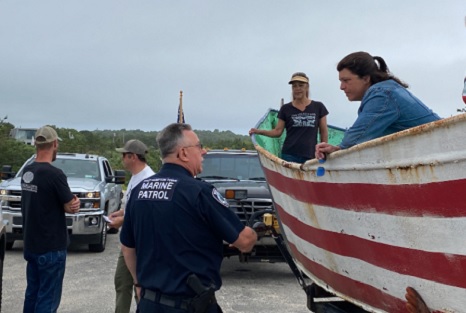
An Organized Act of Civil Disobedience: East Hampton Baymen Take to ‘Truck Beach’ to Protest Court Ruling
East Hampton baymen and their supporters drove a caravan of 39 trucks onto what is popularly known as Truck Beach on Napeague on Sunday morning to assert what they believe is their right to use, and drive on, the ocean beach there. A panel of four New York State Supreme Court Appellate Division judges determined in February that the 4,000-foot stretch of beach is owned by landward residential property owners. Baymen had promised such action in the wake of a June 4 injunction reiterating the Appellate Division panel’s Feb. 3 affirmation,,, >click to read< 07:39

A push to boost commercial fishing industry, post-Coronavirus on Long Island
With the pandemics, the industry suffered on Long Island as restaurants all but shut down, wiping away an important client base for commercial fishing. As the economy continues to reopen, Suffolk County has launched a survey aimed at developing a real-time snapshot of the Long Island commercial fishing industry, which officials say has been “especially hard-hit by the COVID-19 pandemic,” according to a press release from the county. The survey is available here. The information and data collected through the survey will highlight the needs of local fishermen and will guide and assist agencies in providing the resources necessary to continue to support a viable and sustainable fishing industry. >click to read< 11:48
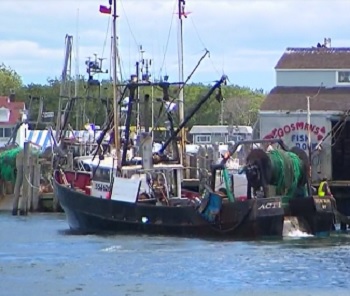
Long Island Commercial Fishermen oppose Governor Cuomo’s artificial reef expansion plan
Gov. Andrew Cuomo’s proposal to expand artificial reefs in the waters off Long Island is hitting a wave of opposition from commercial fishermen who say it would rob them of their fishing grounds and income. The state wants to double the size of the reefs.,, Malcolm McClintock, who owns two fishing trawlers, says he has already spent a long time learning where the existing artificial reefs are. He says more would create a larger problem for an industry already under stress. “One more thing piled on top of many other things. Every little bit hurts.” video, >click to read< 12:40
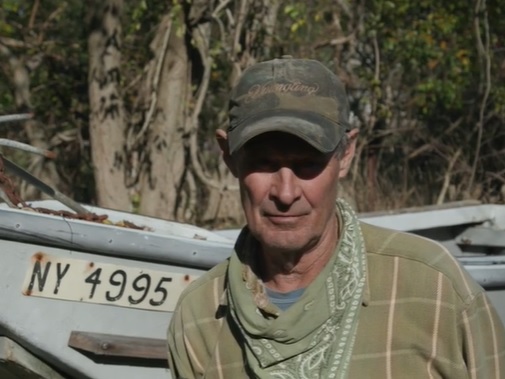
‘They all died’ – Peconic Bay scallop harvesting season appears lost
Peconic Bay scallops, which endured a historic die-off last year, appear to have suffered an even worse fate this year as baymen say early trips show none are to be found, and researchers continue to study multiple potential causes. The scallop harvest season, which starts Monday and continues through March 31, is expected to be a wipeout, fishermen say. Longtime Peconic bayman Bob Bourguignon from Flanders said he and two other longtime baymen took a recent trip to survey some of the best scallop grounds in the Peconic and Shinnecock Bay and found not a single harvestable scallop. >video, click to read< 07:25

Coronavirus: LI fishermen concerned about restart of onboard monitoring program
Some fishermen in Montauk this week said they plan to refuse to allow the federally mandated observers and monitors to board their boats, given the resurgence of COVID-19 around the country and the uncertainty around potential infection from observers, some of whom are housed in Hampton Bays, once considered a Long Island hot spot for the virus. The federal agency ordering the resumption of monitoring said it has enacted a series of safety protocols to protect fishermen and observers, including requiring that observers quarantine for 14 days before the start of a fishing trip. >click to read< 17:14
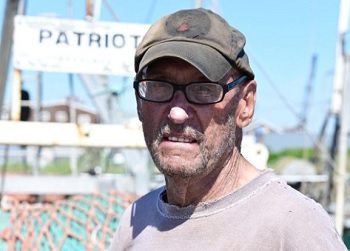
Long Island Coronavirus Hangover: Fishermen’s business remains in the doldrums even as restaurants reopen
While many local fishermen sell to local retailers, a steady local business even through the pandemic, the lion’s share of local fish go to companies that distribute to restaurants throughout the region and across the country. Three months of lockdowns over the coronavirus has backed up the market for the products, leaving warehouses for local frozen fish such as squid fully stocked, while drastically reducing demand for local clams and oysters..,, The summer is normally a prime time for fishing trawlers that harvest squid, said Greenport commercial fisherman Mark Phillips, but the market has been backed up by months of shutdowns and a closure of some export markets, including to China. Phillips said he was hopeful the start of restaurant reopening increases demand for squid, his primary fishery right now. >click to read< 07:47

Coronavirus Adaption: So That’s What They Mean By Doormat: Fresh Fish At Your Doorstep
With the supply chain into Manhattan constricted, if not completely cut off due to the coronavirus crisis, the fishermen who ply their trade on the East End are facing a dwindling demand for their product. “If there is no call for fish, a fisherman may not go fishing,” said Pete Haskell of Haskell Seafood in Quogue. “If we can create enough of a market to keep him out there, it’s a win.” “We have a commercial fishing fleet that needs more outlets to get its seafood to people,” Deliveries have grown almost daily. >click to read< 15:15
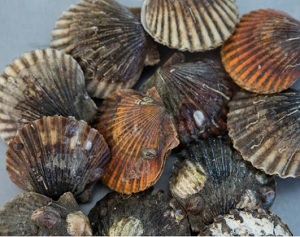
Peconic Bay scallops die-off tied to newly detected parasite
The catastrophic die-off of Peconic Bay scallops in eastern Long Island waters may be tied to a previously undetected parasite that can infect the kidneys of adult and juvenile scallops, state regulators reported Friday. The specific parasitic organism, known as coccidian parasite, was discovered in kidney tissue of all 32 scallops collected and sampled from Shelter Island’s Hay Beach last November, >click to read< 16:28
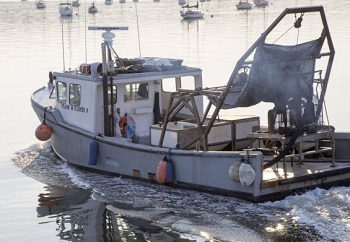
Long Island: Study to assess whether shellfish dredging affects Oyster Bay Harbor
Researchers from Stony Brook University plan to study how mechanical shellfish harvesting kicks up sediment in Oyster Bay Harbor over the coming year. How the sediment affects the environment under the waves is a hotly contested issue that could impact negotiations for a new lease on the town’s shellfish beds. Baymen, independent shell fishermen, allege that shellfishing company Frank M. Flower & Sons Inc.’s methods are damaging the environment. The company’s lawyer said he expects the study to show their methods are safe. >Click to read< 16:25






